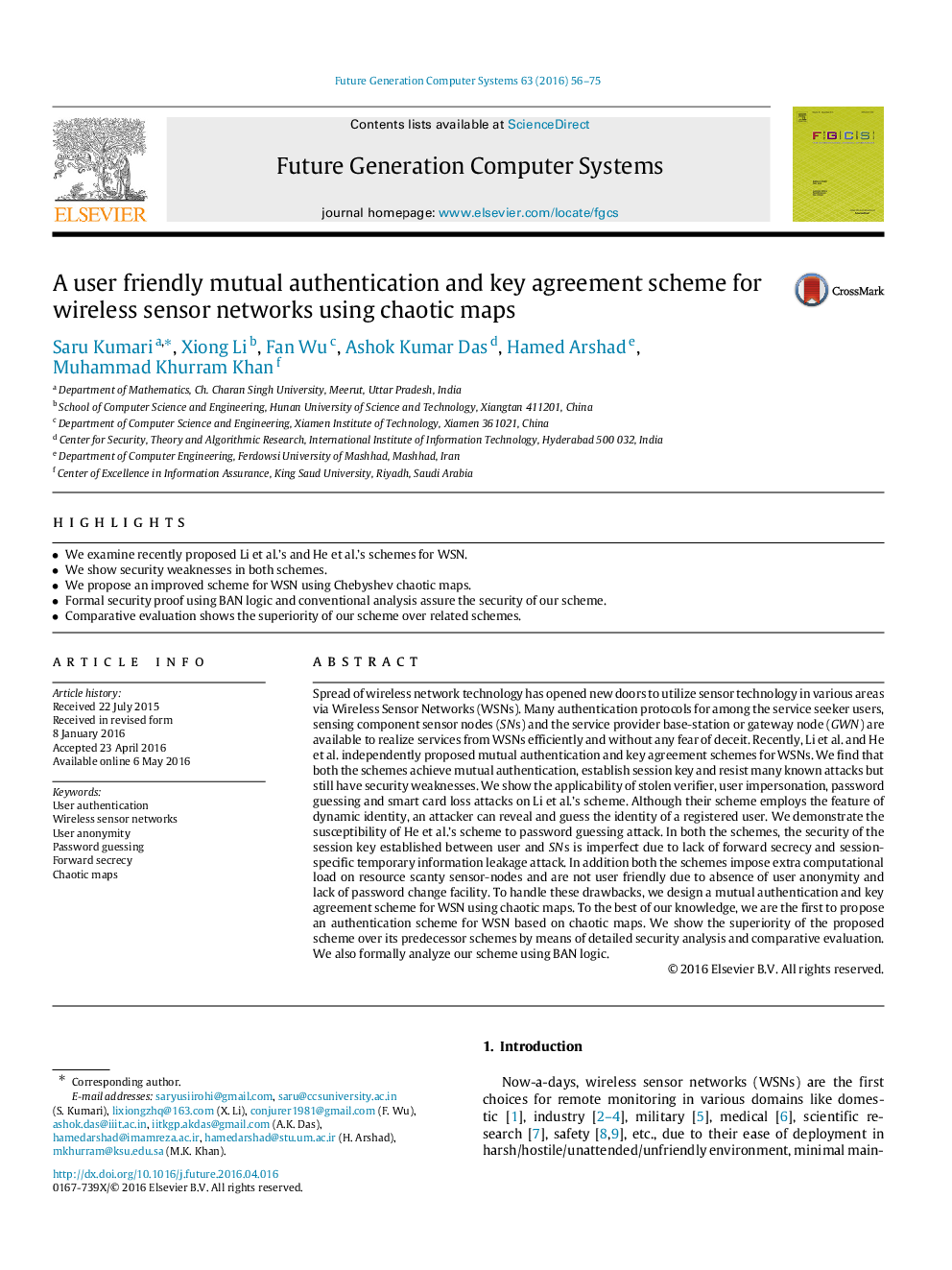| Article ID | Journal | Published Year | Pages | File Type |
|---|---|---|---|---|
| 424508 | Future Generation Computer Systems | 2016 | 20 Pages |
•We examine recently proposed Li et al.’s and He et al.’s schemes for WSN.•We show security weaknesses in both schemes.•We propose an improved scheme for WSN using Chebyshev chaotic maps.•Formal security proof using BAN logic and conventional analysis assure the security of our scheme.•Comparative evaluation shows the superiority of our scheme over related schemes.
Spread of wireless network technology has opened new doors to utilize sensor technology in various areas via Wireless Sensor Networks (WSNs). Many authentication protocols for among the service seeker users, sensing component sensor nodes (SNs) and the service provider base-station or gateway node (GWN) are available to realize services from WSNs efficiently and without any fear of deceit. Recently, Li et al. and He et al. independently proposed mutual authentication and key agreement schemes for WSNs. We find that both the schemes achieve mutual authentication, establish session key and resist many known attacks but still have security weaknesses. We show the applicability of stolen verifier, user impersonation, password guessing and smart card loss attacks on Li et al.’s scheme. Although their scheme employs the feature of dynamic identity, an attacker can reveal and guess the identity of a registered user. We demonstrate the susceptibility of He et al.’s scheme to password guessing attack. In both the schemes, the security of the session key established between user and SNs is imperfect due to lack of forward secrecy and session-specific temporary information leakage attack. In addition both the schemes impose extra computational load on resource scanty sensor-nodes and are not user friendly due to absence of user anonymity and lack of password change facility. To handle these drawbacks, we design a mutual authentication and key agreement scheme for WSN using chaotic maps. To the best of our knowledge, we are the first to propose an authentication scheme for WSN based on chaotic maps. We show the superiority of the proposed scheme over its predecessor schemes by means of detailed security analysis and comparative evaluation. We also formally analyze our scheme using BAN logic.
